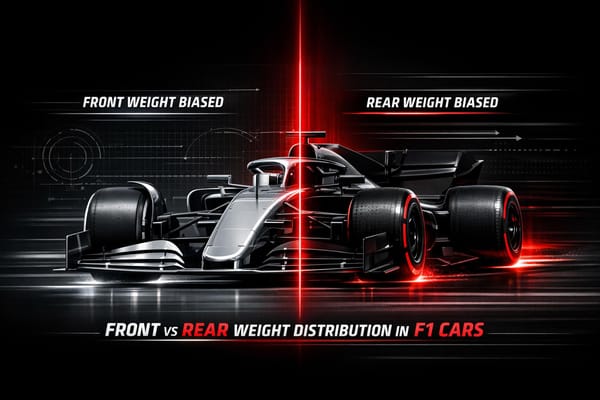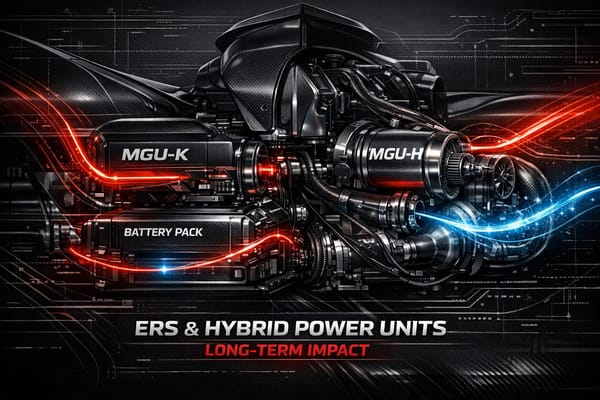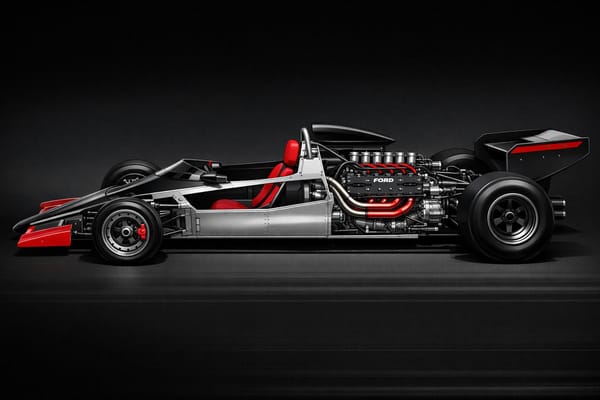Max Verstappen: Red Bull’s Reigning Champion and His Pursuit of Continued Dominance
Exploring the challenges faced by a dominant racing team and their star driver amid evolving competition and technical hurdles in Formula One.
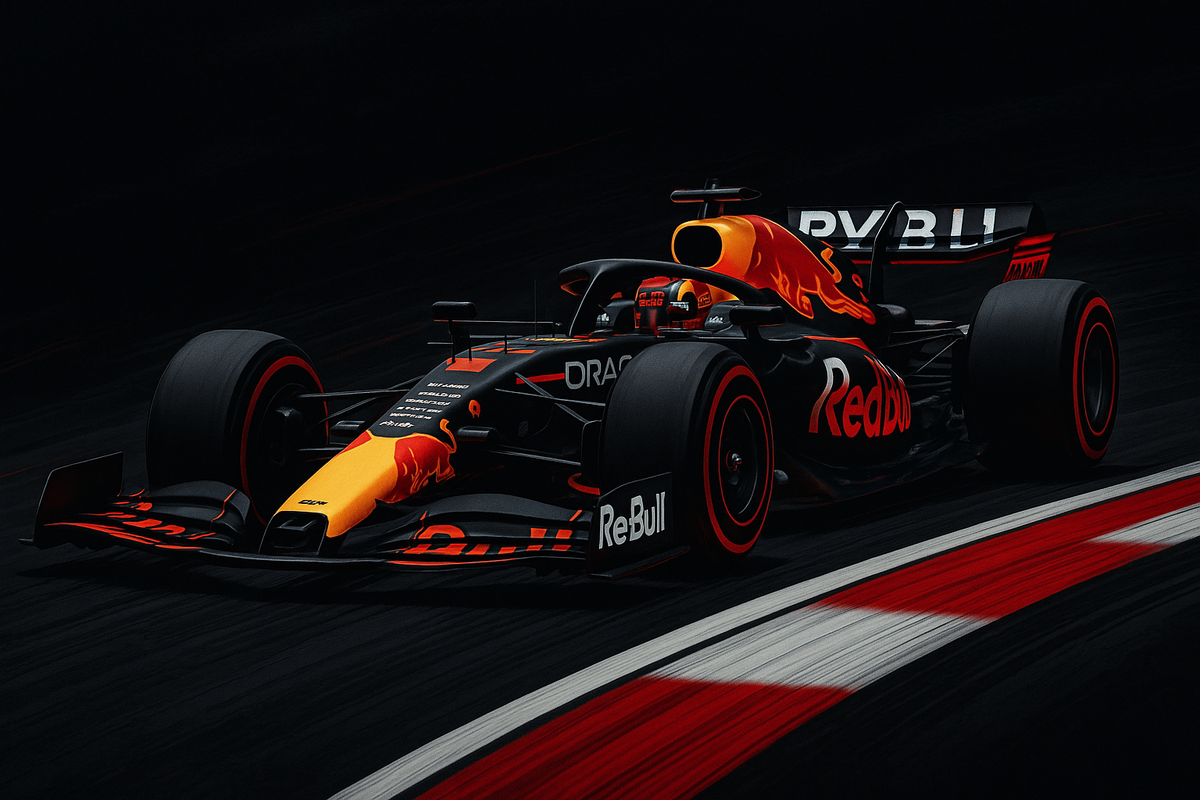
Max Verstappen's dominance in Formula One has been built on his exceptional driving skills and Red Bull Racing's technical expertise. However, the 2025 season has brought challenges. Red Bull's RB21 car is struggling with low-traction issues, leading to poor finishes (P9 in Hungary, P10 in Spain). Verstappen is now out of championship contention, as confirmed by Red Bull's Helmut Marko. Meanwhile, McLaren, Ferrari, and Mercedes are thriving under new F1 regulations that have leveled the playing field.
Key takeaways:
- Verstappen excels in tire management, racecraft, and adapting to challenges, but his performance is tied to car capabilities.
- Red Bull's strengths include advanced aerodynamics, fast pit stops, and data-driven strategies, but they face setbacks under updated regulations.
- New competition from McLaren and others highlights the need for Red Bull to rethink their approach.
The road ahead will test Verstappen and Red Bull’s ability to maintain their edge in a rapidly changing F1 landscape.
Red Bull's exposed where McLaren is 'killing' it in F1 2025
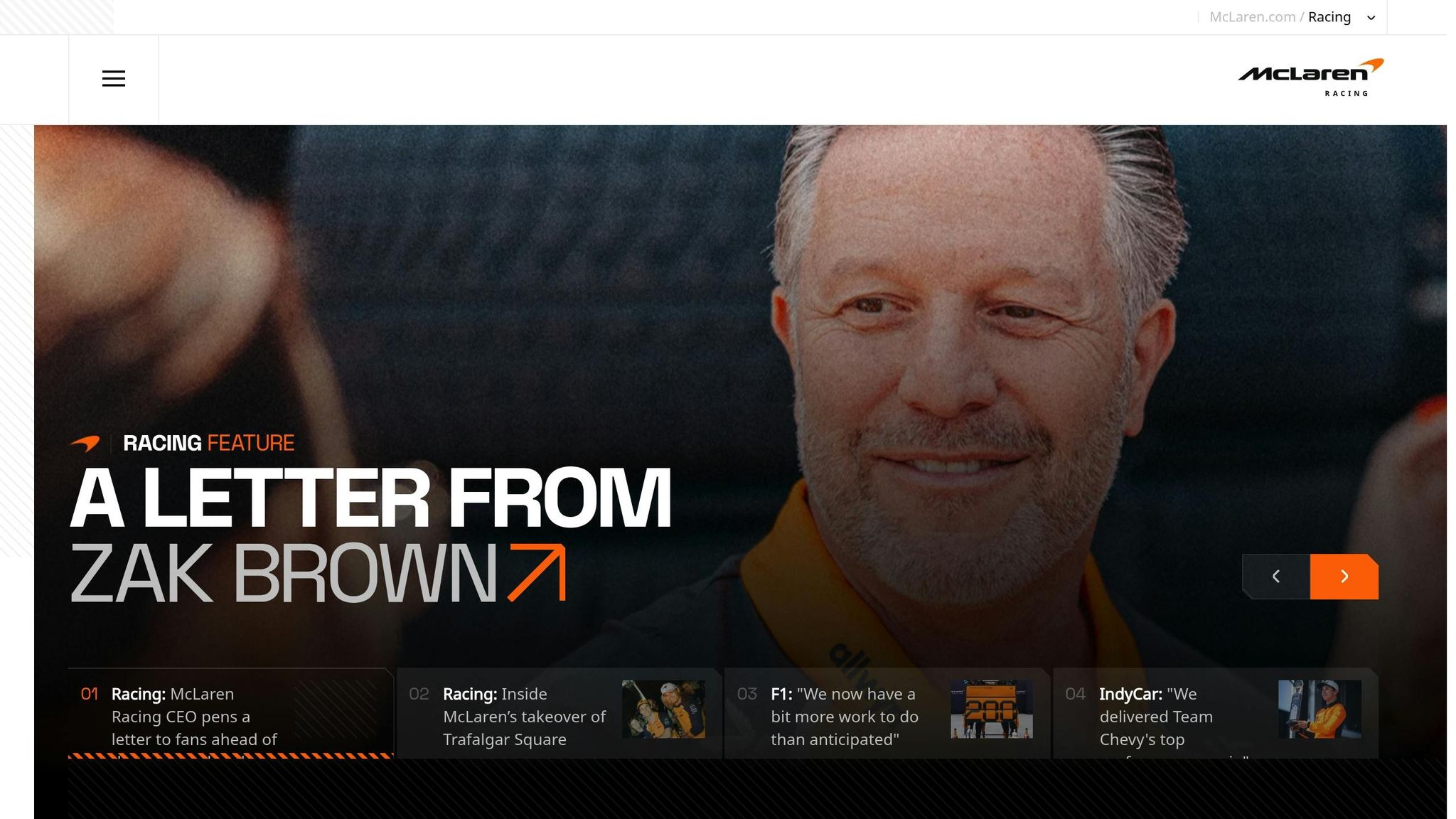
1. Max Verstappen's Racing Skills
Max Verstappen stands out in Formula One with his blend of raw speed, sharp tactical instincts, and unmatched car control. These qualities have cemented his place at the top of the sport, even as the competition grows fiercer.
Racecraft and Wheel-to-Wheel Combat
Verstappen's ability to battle wheel-to-wheel is a hallmark of his racing style. His aggressive yet calculated moves on the track allow him to secure crucial positions without taking unnecessary risks. His overtaking maneuvers, often executed with perfect timing, leave competitors scrambling, particularly in the critical opening laps when track position can dictate the race.
What sets him apart is his spatial awareness. Whether navigating tight corners, battling in unpredictable weather, or managing worn tires, Verstappen has a knack for extracting the most from every situation. His precise control and decision-making keep him ahead in even the most challenging scenarios.
Tire Management and Strategic Thinking
One of Verstappen's most impressive skills is his ability to manage tires. While some drivers prioritize outright speed, Verstappen strikes a careful balance between pace and tire preservation. This allows him to extend stints and opens the door for Red Bull to experiment with alternative pit strategies that often give him a competitive edge.
His communication with the pit crew is another strength. Verstappen provides detailed feedback on car balance, tire wear, and evolving track conditions, helping his team make informed decisions. This level of collaboration ensures they can adapt strategies on the fly, keeping him in the fight for top positions.
Adaptability Under Pressure
When faced with technical setbacks or unexpected challenges, Verstappen's composure shines through. Whether dealing with mechanical issues, grid penalties, or tough qualifying sessions, he remains focused on extracting every ounce of performance. Instead of succumbing to frustration, he adjusts his approach to make the most of the situation.
This mental toughness has been critical during Red Bull's current championship battles, where every point can make a difference. Verstappen’s ability to stay calm and deliver under pressure is a key factor in his success.
Technical Understanding and Setup Work
Beyond his on-track performance, Verstappen plays a crucial role in refining the car's setup. His deep understanding of how adjustments impact performance allows him to guide Red Bull's engineers in optimizing the car for specific tracks. This collaborative effort often results in subtle yet impactful performance gains.
Verstappen’s setup work focuses on tailoring the car to his aggressive driving style while ensuring it remains versatile across various race conditions. As Formula One’s technical regulations evolve, his ability to adapt and provide input has become even more valuable, helping the team stay ahead of the curve.
2. Red Bull Racing's Technical and Strategic Approach
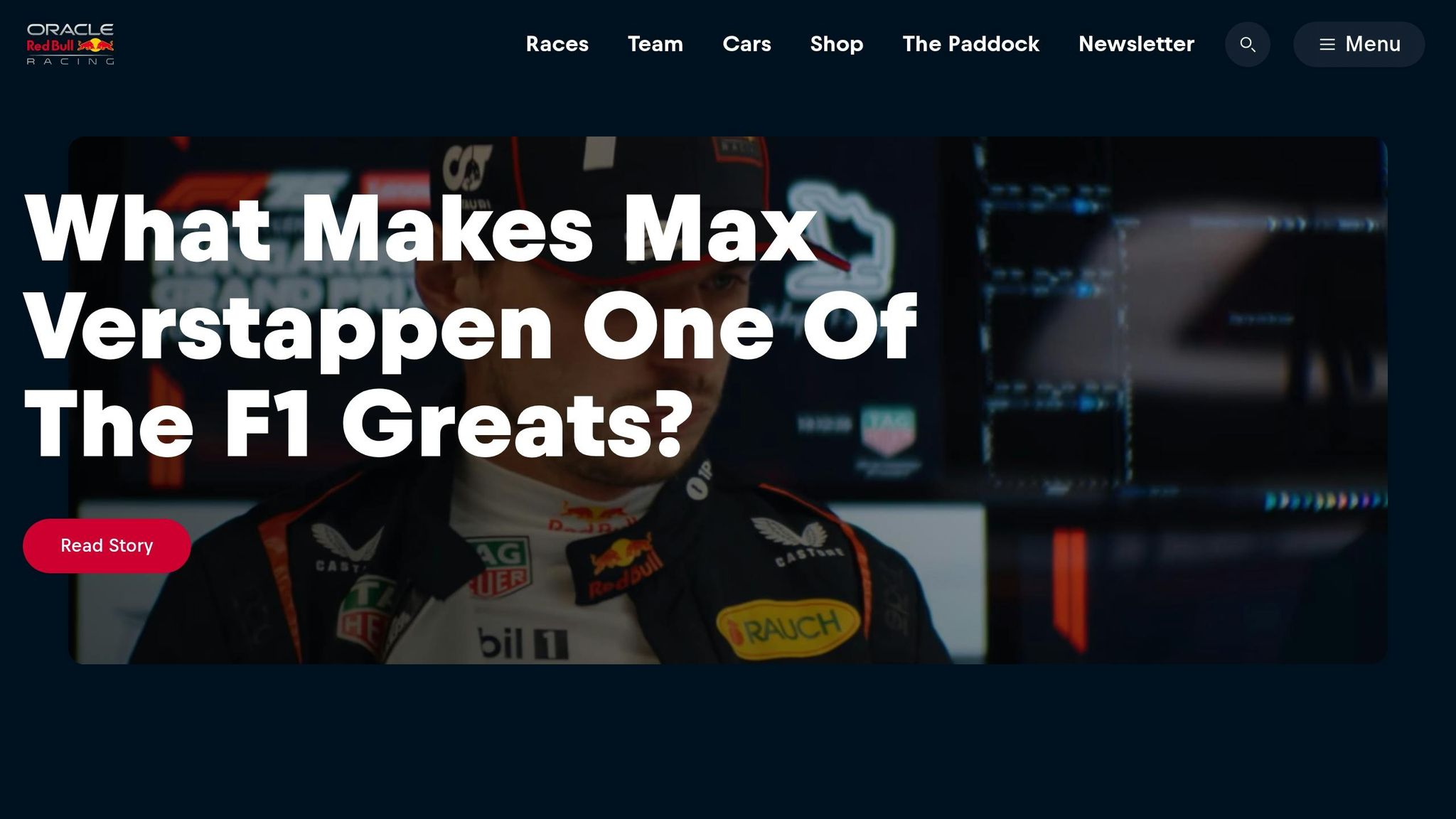
Red Bull Racing has crafted a system that perfectly complements Max Verstappen's driving style. By blending advanced engineering with sharp tactical maneuvers, the team has built a recipe for success that continues to dominate Formula One.
Aerodynamic Philosophy and Car Design
Red Bull's car design focuses on achieving a delicate balance between downforce and drag, ensuring versatility across various track conditions. This balance gives Verstappen the confidence to push the car to its limits, regardless of the challenges each circuit presents.
A key part of their strategy lies in ground effect aerodynamics, which enhances the car's ability to generate downforce through its floor. This creates a stable and predictable platform, perfectly suited to Verstappen's aggressive and precise driving style. Such stability becomes a game-changer, especially during tight wheel-to-wheel battles or unpredictable weather.
To further bolster performance, the team fine-tunes the car's suspension to optimize mechanical grip. This meticulous attention to detail not only improves handling but also provides Verstappen with the flexibility to adapt to shifting track conditions, giving Red Bull an edge during race weekends.
Pit Stop Excellence and Execution
Red Bull's pit crew is among the best in the business, consistently delivering lightning-fast stops. These quick and reliable pit stops open up strategic opportunities during races, allowing the team to pull off bold moves with confidence.
Whether it’s a routine tire change or a quick reaction to a safety car, Red Bull's pit crew rarely falters. Their precision minimizes the risk of errors that could derail race strategies, ensuring that every second counts.
Strategic Decision-Making and Race Management
Red Bull's race strategy is built on a foundation of constant analysis. From monitoring tire degradation to tracking competitor strategies and weather forecasts, the team stays ahead by identifying the best moments for pit stops and other critical decisions.
Their willingness to take calculated risks sets them apart. Whether attempting an undercut or overcut, Red Bull excels at executing these strategies with precision, often gaining valuable track positions. This confidence stems not only from Verstappen's skill but also from their ability to make data-backed decisions under pressure.
Data Analysis and Performance Optimization
Telemetry data plays a massive role in Red Bull's success. By analyzing tire temperatures, fuel consumption, and other metrics in real time, the team can make split-second adjustments to optimize both car performance and race strategy.
What gives Red Bull an edge is their speed in processing this data. While other teams may take several laps to uncover trends, Red Bull's systems identify opportunities almost immediately. This quick turnaround allows them to respond faster to evolving race conditions, keeping them one step ahead.
Tactical Flexibility and Adaptability
In Formula One, rigid plans rarely survive the chaos of race day. Red Bull thrives on adaptability, preparing for multiple scenarios and staying ready to pivot as needed. Whether it’s a sudden weather change, a safety car, or an unexpected technical issue, the team’s flexibility ensures they’re always prepared.
Clear and efficient communication with Verstappen is a cornerstone of this adaptability. Their radio protocols are designed to deliver complex information in a concise way, enabling Verstappen to stay focused while remaining fully informed about the race's tactical shifts.
Integration of Technology and Human Expertise
Red Bull's strategic approach is a seamless blend of cutting-edge technology and human intuition. Advanced simulation tools model countless race scenarios, but final decisions are always guided by experienced judgment. This combination ensures that no opportunity is missed, even when raw data alone might not provide the full picture.
Pros and Cons
With Verstappen's undeniable talent and Red Bull's cutting-edge technology, their dominance in Formula One is no accident. However, like any powerhouse, their success comes with both strengths and areas where vulnerabilities could surface. Here's a closer look at their competitive edge and potential pitfalls:
| Aspect | Strengths | Weaknesses |
|---|---|---|
| Verstappen's Racecraft | Outstanding wet-weather skills, fearless overtaking, consistent under pressure | Occasional over-aggression in close battles, performance closely tied to car capabilities |
| Technical Innovation | Advanced aerodynamics, expertly tuned suspension, excellent mechanical grip | Heavy reliance on specific design philosophies, susceptible to rule changes |
| Strategic Execution | Blazing-fast pit stops, data-driven strategies, adaptability in race tactics | Overly complex strategies under pressure, occasional communication breakdowns |
| Team Dynamics | Strong driver-team synergy, clear communication systems, adaptability to evolving conditions | Over-reliance on Verstappen, limited options if primary strategies fail |
Verstappen's Racecraft stands out in tough conditions. His ability to thrive in wet races and his mental toughness under pressure make him a formidable competitor. However, his aggressive nature can sometimes lead to unnecessary risks, especially in wheel-to-wheel situations where patience might yield better results.
Red Bull's Technical Expertise is another cornerstone of their success. Their ability to tailor car setups to Verstappen's driving style creates a perfect harmony between driver and machine. This precision is further amplified by their advanced data analysis, which helps them stay ahead of the curve. Still, their reliance on a specific aerodynamic philosophy could leave them vulnerable if regulations shift dramatically.
Strategic Execution is often where Red Bull shines. Their pit crew is among the fastest in the sport, and their strategies are backed by meticulous data analysis. However, when faced with unpredictable scenarios, their strategies can sometimes become overly complicated, leading to mistakes or miscommunication during high-stakes moments.
Team Dynamics are generally a strength, with seamless integration between Verstappen and the team. Their ability to adapt to changing race conditions is commendable, but their heavy dependence on Verstappen's performance is a double-edged sword. If he falters, the team has limited fallback options, which could expose weaknesses in their overall strategy.
Future Challenges loom large as Formula One continues to evolve. With tighter cost caps and regulations aimed at leveling the playing field, Red Bull may need to make tough decisions about balancing performance upgrades with budget constraints. Rival teams like Mercedes and Ferrari are also closing the gap, occasionally matching Red Bull's performance on specific weekends. This constant pressure to innovate while maintaining dominance adds another layer of complexity to their journey ahead.
As the championship landscape evolves, Red Bull's ability to adapt and address these vulnerabilities will determine whether they can sustain their position at the top.
Conclusion
The partnership between Max Verstappen and Red Bull Racing has set a high standard in modern Formula One. Their dominance is rooted in the seamless blend of Verstappen's extraordinary driving skills and Red Bull's technical precision. Together, they’ve created a formula for success that’s hard to rival.
Verstappen’s ability to navigate high-pressure situations and adapt to various challenges complements Red Bull’s innovative techniques. The team’s commitment to crafting car setups that perfectly align with his driving style ensures they’re ready to perform at their best on any given race day. Add to that their lightning-fast pit stops and strategic flexibility, and you have a duo capable of turning potential into championship victories.
As the 2025 season progresses, several factors will test their continued dominance. Tightened cost cap regulations could limit Red Bull's development options, and competitors like Mercedes and Ferrari have occasionally shown they can match the pace. Additionally, Red Bull’s heavy reliance on Verstappen could expose vulnerabilities if unforeseen challenges arise. These dynamics highlight the constant need for fresh strategies and technical evolution in the ever-changing world of Formula One.
That said, Red Bull’s proven ability to adapt gives them a strong foundation to stay ahead. Their knack for refining their approach while maintaining the core strengths that amplify Verstappen’s effectiveness keeps them a step ahead of the competition. If they can address any gaps in their strategy and maintain this synergy, Verstappen and Red Bull are likely to remain the team to beat.
The road ahead will demand adjustments to Formula One’s shifting landscape, but with their mix of technical brilliance, strategic expertise, and Verstappen’s raw talent, they’ve built a platform for sustained success. Together, they embody the relentless drive that defines the pinnacle of motorsport today.
FAQs
How have recent F1 regulation changes affected Red Bull Racing and Max Verstappen's championship performance?
Recent F1 Regulation Changes and Red Bull's Edge
The latest Formula 1 regulation updates, which include tweaks to chassis designs and engine specifications, have significantly influenced Red Bull Racing's success and Max Verstappen's continued reign at the top. By teaming up with Ford to create cutting-edge power units, Red Bull has capitalized on these changes, improving both the aerodynamics of their cars and their overall competitiveness.
These advancements have helped Verstappen maintain a commanding lead on the circuit. However, looming technical changes from the FIA could pose fresh challenges that might affect Red Bull's current dominance. For now, their forward-thinking strategies and ability to adapt ensure they remain a force to be reckoned with in the sport.
What challenges is Red Bull’s RB21 car facing in the 2025 season, and how is the team working to overcome them?
The Red Bull RB21 is facing some tough hurdles in the 2025 season, particularly with aerodynamic inefficiencies and a narrow performance window that make it hard to stay competitive. These limitations have hindered the car's ability to deliver consistent results across different track conditions.
To tackle these challenges, the team rolled out aerodynamic updates, including major adjustments unveiled during the Spa race weekend, aimed at boosting overall performance. Red Bull has also taken a distinct development path, choosing not to mirror the solutions used by their sister team. However, despite these efforts, the car's performance remains highly sensitive to specific conditions, leaving it exposed to rivals like McLaren.
As Red Bull continues to fine-tune the RB21, the team faces the pressing task of making the car adaptable to a wider variety of scenarios - a key element in staying ahead of the competition.
How can Red Bull Racing and Max Verstappen stay ahead in a more competitive Formula 1 environment?
To thrive in an increasingly competitive Formula 1 environment, Red Bull Racing must prioritize constant innovation. This means refining aerodynamics, enhancing engine performance, and leveraging advanced tools like data analytics and AI to fine-tune race strategies and maximize car efficiency. Staying ahead requires adaptability to meet the ever-changing demands of the sport.
On race day, Max Verstappen can focus on honing his racecraft, making tactical tire decisions, and staying sharp in unpredictable conditions. By blending cutting-edge technology with strategic adaptability and Verstappen's exceptional driving skills, Red Bull has the tools to remain a dominant force in Formula 1.
Related posts
- Suzuka Returns: Key Battles to Watch at the 2025 Japanese Grand Prix
- Zandvoort Fever: Will the Dutch Crowd Power Verstappen to Glory Again in 2025?
- Desert Precision: The 2025 Qatar Grand Prix and Its Title Implications
- The Final Showdown: Will the 2025 Abu Dhabi Grand Prix Decide the Championship Again?

